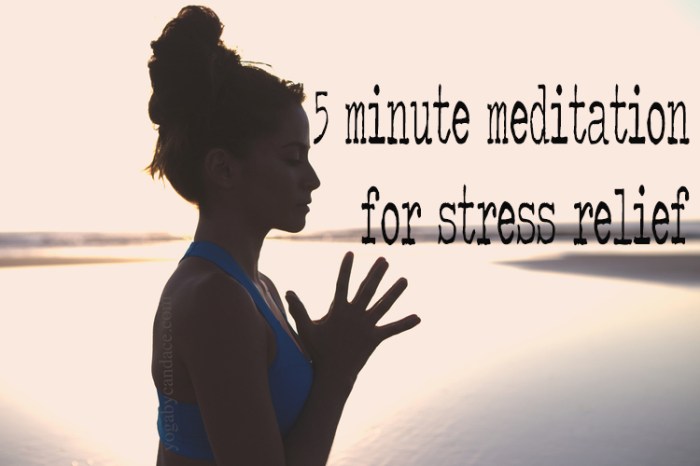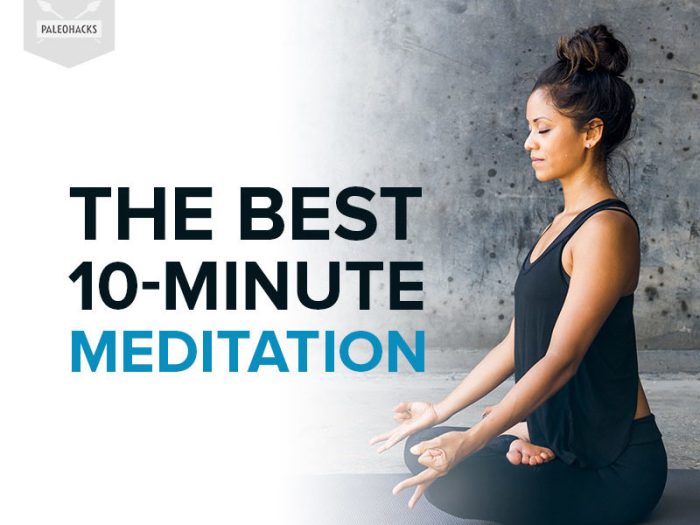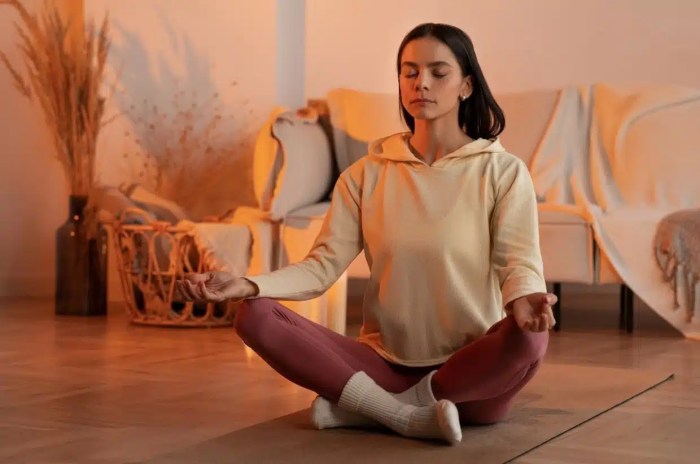10-Minute Guided Meditation for Stress Relief sets the stage for a peaceful journey towards relaxation and inner calm. Dive into the world of meditation as we explore techniques to alleviate stress and soothe the mind.
In today’s fast-paced world, stress has become a common companion in our daily lives. Finding time for a quick 10-minute guided meditation session can make a world of difference in how we manage and cope with stress.
Overview of 10-Minute Guided Meditation for Stress Relief

Guided meditation is a practice where an experienced guide leads you through a meditation session, helping you focus and relax your mind. This form of meditation can be beneficial for reducing stress, anxiety, and promoting overall well-being.Stress relief is crucial in daily life as persistent stress can negatively impact both our mental and physical health. It can lead to various health issues such as high blood pressure, insomnia, and weakened immune system.
Finding ways to manage and reduce stress is essential for maintaining a healthy lifestyle.A short 10-minute guided meditation session can make a significant difference in managing stress. It provides a quick break from the chaos of daily life, allowing you to reset and refocus your mind. Even a brief session can help calm your thoughts, reduce tension in your body, and improve your overall mood.
Setting the Scene for Meditation

Creating the right environment is crucial for a successful stress-relief meditation session. It helps in setting the mood and enhancing the overall experience.
Ideal Environment for Meditation
- Choose a quiet and peaceful space where you won’t be disturbed.
- Dim the lights or light candles to create a calming ambiance.
- Play soft instrumental music or nature sounds to aid relaxation.
Creating a Calming Atmosphere
- Declutter the space to remove distractions and promote a sense of tranquility.
- Burn incense or use essential oils with calming scents like lavender or chamomile.
- Consider incorporating elements of nature such as plants or natural light.
Significance of Comfortable Seating and Proper Posture
- Choose a cushion or chair that supports your back and allows you to sit comfortably for an extended period.
- Maintain an upright posture to ensure proper alignment of the spine and facilitate deep breathing.
- Relax your shoulders, jaw, and hands to release tension and fully engage in the meditation practice.
Breathing Techniques for Stress Relief

Breathing techniques play a crucial role in reducing stress and promoting relaxation. By focusing on deep, intentional breathing, you can calm your mind and body, bringing a sense of peace and tranquility.
Diaphragmatic Breathing
Diaphragmatic breathing, also known as belly breathing, involves taking deep breaths that expand your diaphragm. To practice diaphragmatic breathing, follow these steps:
- Sit or lie down in a comfortable position.
- Place one hand on your chest and the other on your belly.
- Inhale deeply through your nose, feeling your belly rise as you fill your lungs with air.
- Exhale slowly through your mouth, feeling your belly fall as you release the air.
- Repeat this process for several minutes, focusing on the sensation of your breath.
4-7-8 Breathing Technique
The 4-7-8 breathing technique is a simple yet effective method for reducing stress and anxiety. Here’s how to practice the 4-7-8 breathing technique:
- Inhale quietly through your nose for a count of 4 seconds.
- Hold your breath for a count of 7 seconds.
- Exhale slowly and audibly through your mouth for a count of 8 seconds.
- Repeat this cycle for a few rounds, focusing on the rhythm of your breath.
Breath Awareness and Mindfulness
Breath is intimately connected to our emotional well-being. By paying attention to our breath, we can bring ourselves into the present moment and cultivate a sense of mindfulness. Practice breath awareness by simply observing your breath without trying to change it. Notice the sensation of each inhale and exhale, bringing your awareness to the present moment.
Body Scan and Relaxation Exercises

Body scan meditation is a practice aimed at promoting relaxation by systematically focusing on different parts of the body. By directing attention to various sensations, individuals can release tension, reduce stress, and achieve a state of calmness.
Systematically Relaxing Different Parts of the Body
- Start by finding a comfortable position, either sitting or lying down, where you can fully relax.
- Begin by bringing your awareness to your toes, noticing any tension or sensations present in that area.
- Take a deep breath in, and as you exhale, imagine the tension leaving your toes, allowing them to relax completely.
- Continue this process by moving your focus to your feet, ankles, calves, and gradually working your way up through each part of your body.
- With each breath, release any tension you may be holding in that specific area, allowing it to soften and relax.
- Remember to breathe deeply and mindfully throughout the body scan, staying present in the moment.
Focusing Attention on Sensations
- As you scan each part of your body, pay attention to any sensations you may feel, such as warmth, tingling, or heaviness.
- Notice any areas of discomfort or tension without judgment, simply acknowledging them and allowing them to release with each breath.
- If your mind starts to wander, gently guide your focus back to the present moment and the sensations in your body.
- By cultivating this awareness and connection to your physical self, you can deepen your relaxation and reduce stress levels effectively.
Guided Visualization for Stress Relief: 10-Minute Guided Meditation For Stress Relief

Guided visualization is a powerful technique used in meditation to help calm the mind and reduce stress by engaging the power of imagination. By creating vivid mental images, individuals can shift their focus away from worries and anxieties, promoting a sense of relaxation and inner peace.
Examples of Visualizations, 10-Minute Guided Meditation for Stress Relief
- Imagine yourself in a peaceful garden, surrounded by blooming flowers and gentle butterflies. Feel the warmth of the sun on your skin and the soft breeze on your face.
- Visualize a serene beach with crystal clear water and golden sands. Hear the soothing sound of waves crashing gently on the shore and feel the sand between your toes.
- Picture a tranquil forest with tall trees and chirping birds. Feel the earth beneath your feet and the fresh, clean air filling your lungs.
The Power of Imagination
Imagination plays a crucial role in calming the mind and reducing anxiety during guided visualization. By immersing yourself in detailed and peaceful mental images, you can create a sense of escapism from stressors in your life. This process triggers the relaxation response in your body, releasing tension and promoting a state of calmness.
Ending Remarks
In conclusion, 10-Minute Guided Meditation for Stress Relief offers a simple yet effective way to unwind and find peace amidst the chaos. By incorporating these practices into your routine, you can experience a sense of calm and rejuvenation that will benefit both your mind and body.